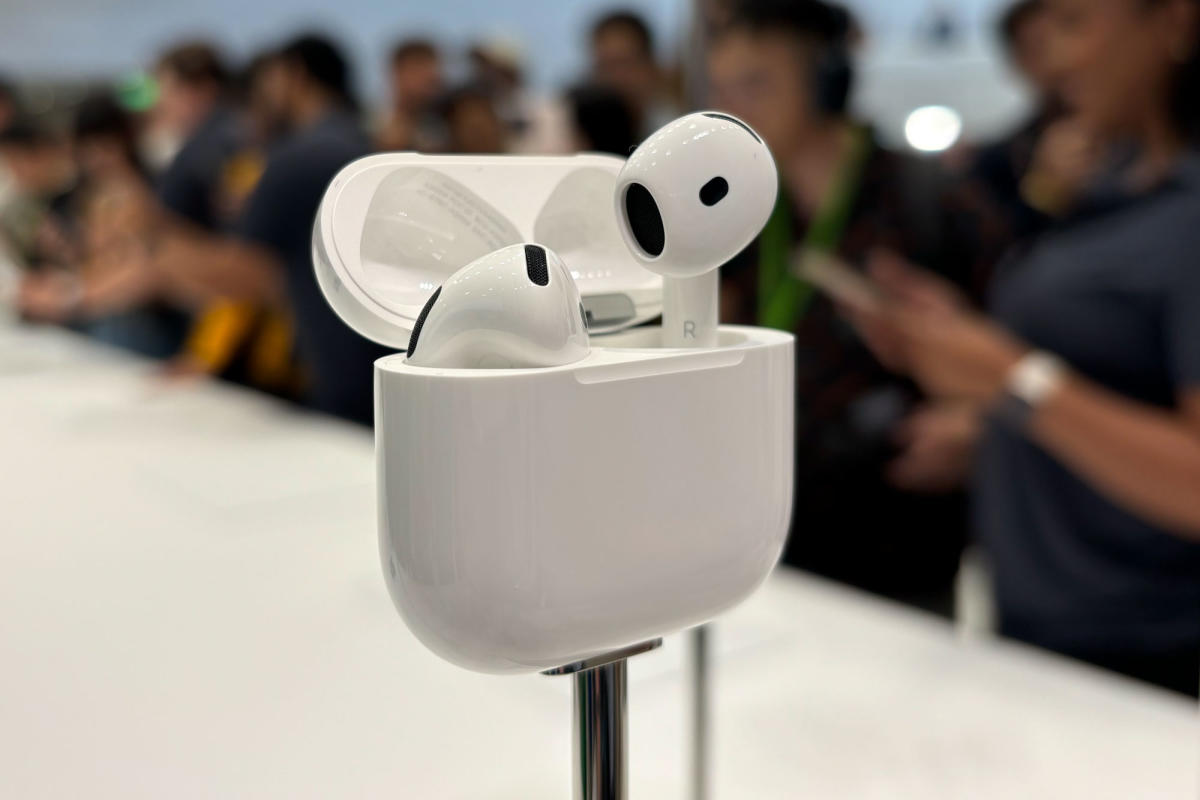
The headline feature of the AirPods 4 may be active noise cancellation (ANC), but Apple has done well to improve the overall audio quality in addition to blocking environmental sounds. For the first time on the “regular” AirPods ANC is on the spec sheet, at least for one model, and there are a few key components that allow the earbuds to effectively cancel noise. And that’s despite the fact that your ears aren’t completely sealed off with a flexible tip. There are also specific changes to the AirPods 4 that improve overall sound quality, a feat that’s impressive in its own right for open design earbuds.
When it comes to the ANC setup on AirPods 4, the combination of a refined earbud shape, the power of the H2 chip and upgraded microphones work in unison for useful noise cancellation. Apple isn’t the first to offer ANC on open-type earbuds. I’ve reviewed dozens of sets of earbuds over the years, and after a few minutes with the AirPods 4, I would argue the company is the first to actually employ noise cancelling in a way that’s actually helpful while not fully sealing off your ears. The ANC setup here obviously blocks noise, which isn’t always the case with this type of buds.
Apple has amassed a database of thousands of ear scans and 50 million data points, both of which contributed to the tapered design and reduced proportions of the AirPods 4. Those changes mean the earbuds fit better in more people’s ears. A better fit means the ANC tech is less reliant on a complete seal to do its thing, but also it means that the earbuds should be more comfortable to wear.
The updated microphones have both a lower noise floor and higher frequency bandwidth. This means that the system can detect a wider range of sounds that it may need to block out. Plus, there’s advanced computational audio at work for the ANC here, powered by the H2 chip. This component also enables the features from AirPods Pro to be available on AirPods 4, from Voice Isolation to Siri Interactions and more.
The addition of ANC arrives alongside transparency mode on the regular AirPods for the first time. I want to note that while I did observe less than ideal performance in a brief trial in the busy hands-on area after the event, the sound quality here should be just as natural as what’s on the AirPods Pro. There could be a number of reasons why I couldn’t hear my voice come through as clearly on this new model, including the fact that the demo room was wall-to-wall with journalists all raucously vying for the same limited real estate.
Apple also sought to drastically improve the overall sound quality on the AirPods 4, and a key way it did so is really quite simple. Rather than having the driver pointed towards the side of your ear, the company repositioned it so that the audio is pointed directly into your ear canal. That change also reduced the number of audio reflections inside the AirPods housing, which allowed the company to enhance performance at higher frequencies. The result is increased overall clarity. There’s also new acoustic architecture, a new low-distortion 11 millimeter driver and a new high dynamic range amp.
The result of all of those sonic changes on the AirPods 4 is an obvious boost in overall sound quality. After a brief listening session, I can vouch for the increased clarity the company described in its announcement, as well as a deeper, fuller effect on the audio. You’ll notice a big difference between these and the third-gen AirPods, even if you don’t spring for the ANC version.
Catch up on all the news from Apple’s iPhone 16 event!
Trending Products




